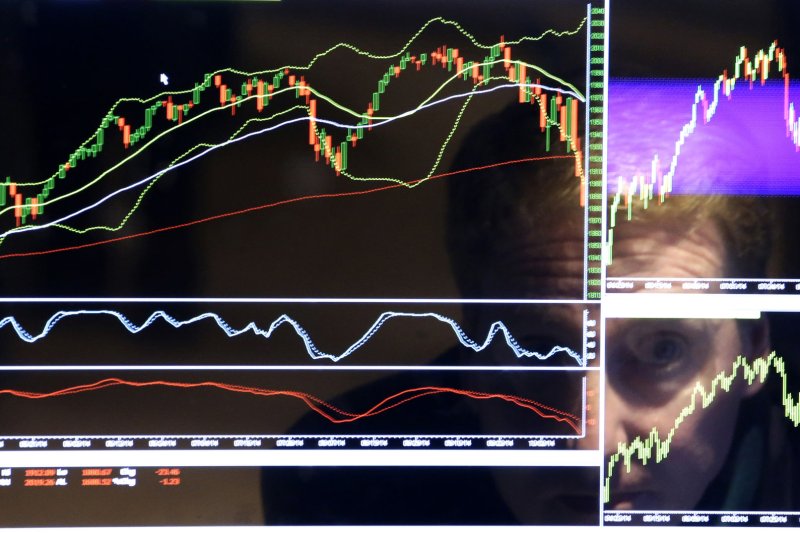Oil prices are bouncing around in early Friday trading as inflationary pressures continue to show signs of building in the U.S. economy. File photo by John Angelillo/UPI |
License Photo
Feb. 16 (UPI) -- Crude oil prices were slightly lower in early Friday trading on competing narratives on global demand and inflationary pressures in the United States.
Crude oil prices have been volatile for much of the week, mirroring broader trends in the equities market. The price of oil, nonetheless, is flirting with a formal correction, giving up roughly $6 per barrel from its peak close above $70 for Brent, the global benchmark.
Early enthusiasm over the pace of economic growth helped drive broad-based market optimism to extend a rally in oil prices for most of January. The exuberance overshadowed steady and strong gains in U.S. crude oil production, which has since helped drive the price of oil toward the $60 range.
A report this week from Morningstar found more U.S. oil could wind up on the global marketplace and possibly upset an effort by the Organization of Petroleum Exporting Countries to drain the surplus from the oil inventories held by the world's industrialized economies. A separate report from UBS, however, found demand could be enough to sop up the extra petroleum and petroleum products moving through the global market.
Oil prices had been posting gains in most of the overnight trading, but started moving lower before the start of trading in New York. The price for Brent was down 0.05 percent as of 9:15 a.m. EST to $64.30 per barrel. West Texas Intermediate, the U.S. benchmark for the price of oil, was down 0.39 percent to $61.10 per barrel.
The price of oil could be influenced later in the day when Baker Hughes releases its weekly rig count. A loose indicator of exploration and production, gains in North America could signal stronger future production and drive the price of oil lower.
Elsewhere, there are more indications of inflationary pressures building in the U.S. economy. Those fears triggered steep declines in U.S. and global stock indices earlier this month. On Wednesday, the U.S. Bureau of Labor Statistics reported the consumer-price index, a gauge on the inflation in what consumers pay for everything from toothpaste to socks, increased 0.5 percent last month, after rising 0.2 percent in December.
Year-over-year, all prices increased on average by 2.1 percent. The BLS said Friday that the price of goods imported into the United States increased 1 percent in January, after an increase of just 0.2 percent in December. Fuel prices jumped the most on the back of higher oil prices, though federal data show prices for non-fuel imports increased 0.4 percent in January, after posting a decline of 0.1 percent the previous month.















